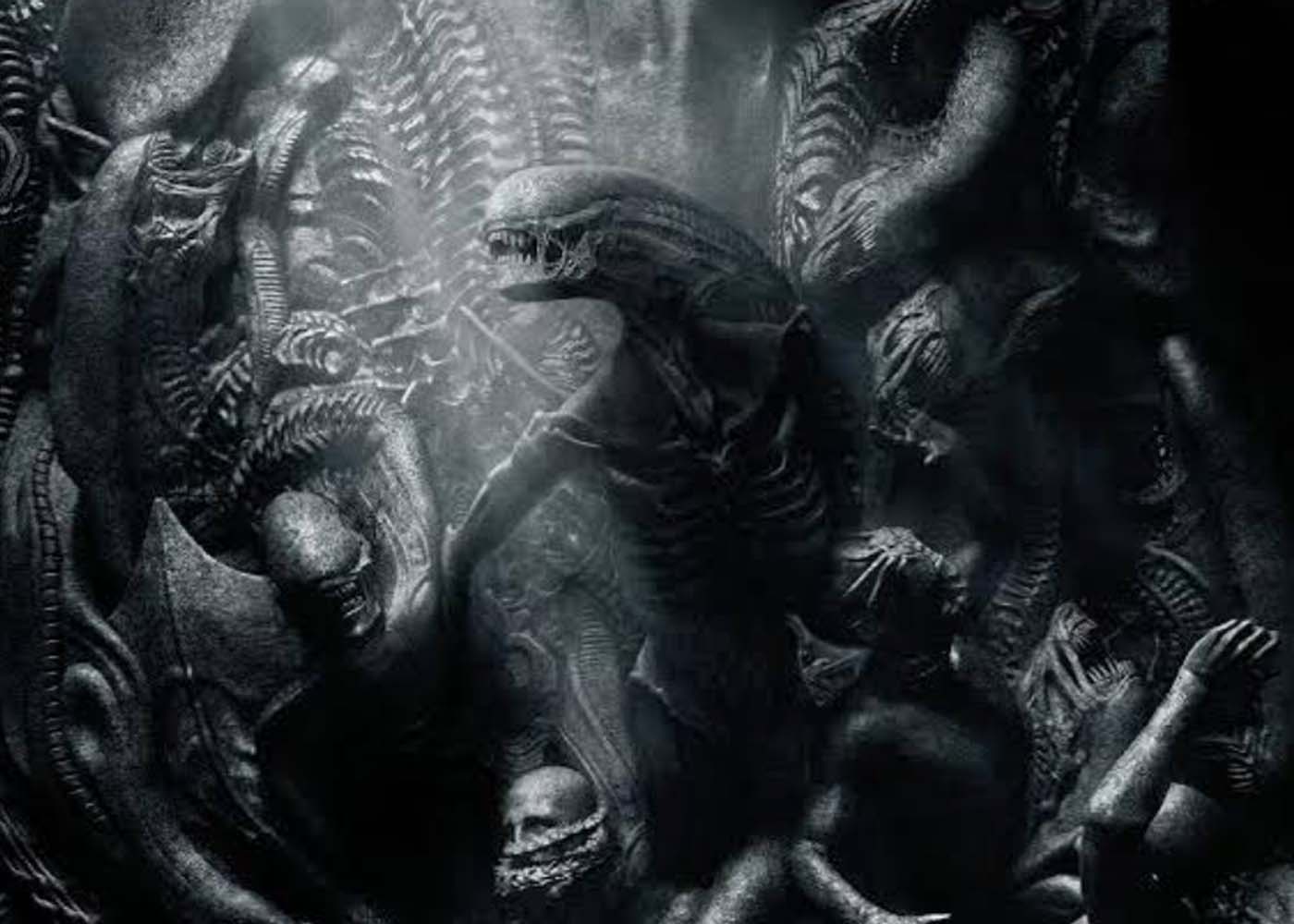This content has been archived. It may no longer be relevant
Alien: Covenant finds Ridley Scott once again commandeering a vessel full of disparate characters through the horrifying space playground of the Alien franchise. It’s a world he built way back in 1979, and one that he expanded upon in 2012’s much maligned Prometheus. They’re two polar opposite instalments that are indicative of what makes the world of Alien so intriguing; they’re singular visions. One is an intimate haunted house stalk and slash, the other is an ambitious slice of Sci-Fi myth making.
All of the directors that have steered the visitors of these planets to their demise, whether that’s James Cameron on LV-426, or David Fincher and Fiorina 161, have done so with their own unique take on those pesky xenomorphs, and now Scott’s back, with an effort in which his two worlds collide, attempting to strip away the perceived pomposity of Prometheus, in order to provide you with enough moments of chestburster style horror discomfort to almost make Covenant the kind of dark trip into bizarre hell you’d hoped it might be.
It’s now 2019, roughly a decade after we left Elizabeth Shaw (Noomi Rapace) and her travelling companion, the disembodied head of duplicitous android, David (Michael Fassbender), and the crew of The Covenant, a transporter ship carrying colonists to a new world, are summoned to a planet that seems more conducive to repopulation. There are crops that appear to be farmed by other living beings, breathable air, and Earth-like terrain. It’s like paradise. But as we know from the DNA of this franchise, it’s a world built by Gods and ruled by monsters, ones that mostly come at night, mostly.
With scenes that will make you cover your eyes, ears, and mouths, Covenant is as close to the body horror of 1979 that you’re likely to see this side of a 15-rating. Audacious in-ear shots that’ll have you squirming like a Wrath of Khan re-watch, and pay-offs to the back-buster scenes hinted at in the trailer, which are explicit, gruey, and legitimately disgusting.
In fact, it’s during the first hour, in which these seeds and spores of destruction are planted, that Covenant is at its strongest. There’s an overriding, suffocating sense of doom, which is palpably unshakeable from the off. You know what these characters are going to do, and their largely textbook actions signal the start of inevitably horrific events of the armchair gripping kind.
This is also when we familiarise ourselves with the crew of the Covenant, and there are plenty of surprises to be had. For one, Danny McBride largely plays things straight, getting to flex his dramatic chops to winning effect. Also acting against the preconceptions set up by the marketing, Katherine Waterston, whilst undeniably kick-ass and level-headed, isn’t exactly in the gun-toting Ellen Ripley mould that the posters portrayed. Billy Crudup also gets an interesting arc as the man of faith. Outside of these three, the characters are largely Alien crew archetypes, but thankfully to nowhere near the stupidity levels of their Prometheus predecessors.
Once again, the MVP is Michael Fassbender, here playing Walter, the Covenant’s synthetic, as well as the returning David. It’s a dual role which affords director and actor the chance to have fun with their conflicting ideals, as well as some neat visual trickery.
He might also prove to be the most divisive aspect of the film, because once David re-enters the narrative, the script begins to veer into the kind of faux-mythological posturing that turned so many off Prometheus.
While we’re on the genetic make-up of that film, remember how the organism’s gestation period was so truncated in Prometheus? Well, here it appears to be even quicker. It’d take longer for a mosquito bite to itch, than it can take for a chest/back/mouthburster to explode from one of the assorted Covenant victims. A desire for momentum is understandable, but the speed diminishes the impact of the suffering. Imagine if we hadn’t had John Hurt’s recuperation period to lull us into a false sense of security before his iconic fate plays out. It wouldn’t have been half as brutal to watch.
Pacing is an issue symptomatic with the film as a whole, especially during the second half, where the potential for Alien invoking, corridor lurking tension, is substituted for action mechanics, and spaceship swinging. The sound of your own heartbeat is more terrifying than crashes and bangs, the first half of the film will testify to that. So whilst the set-pieces are all very fast and thrilling, at points they’re also so visually incoherent, that any intended effect is lost through the fast cuts and frantic editing.
More successful is the wonderful set design. Eschewing the futuristic shine of Prometheus for clanging metal and rattling chains. The desire to visually sync with the antiquated tech of the original films is a neat touch.
Image: 20th Century Fox
Summary
Please remember that these are minor gripes. You can’t forget that we’re holding Alien: Covenant up against Alien and Aliens, two of the most genre defining films of all time. Instead of trying to best them, this settles for more of a greatest hits package, docking somewhere on the sliding scale of Alien movies below the aforementioned classics, but towering above everything else.


